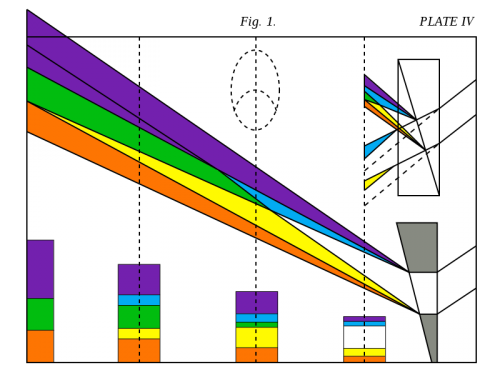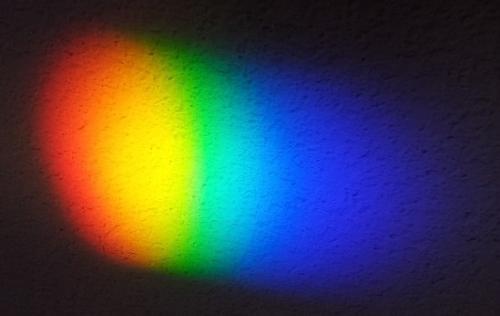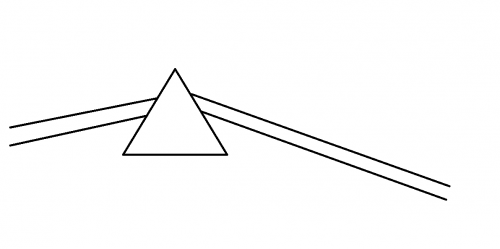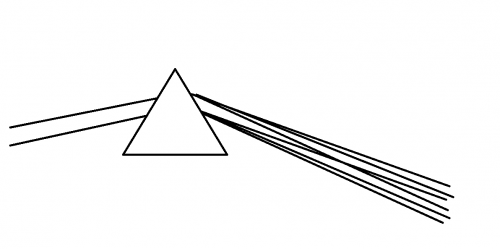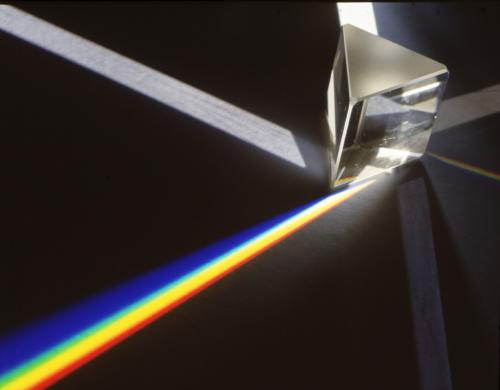

PEOPLE
Members-
Posts
6 -
Joined
-
Last visited
Content Type
Profiles
Forums
Events
Everything posted by PEOPLE
-

why light is consist of seven or more color not only three color?
PEOPLE replied to PEOPLE's topic in Classical Physics
Sunlight is consist of seven or more color light in current theory, as three primary light also can get the same result about sunlight through a prism. So the result of diffraction gratings about three primary color light source and seven or more color light source also is the same. If there are one light source has only three primary color and another light source has seven or more color. How do diffraction gratings distinguish which light source has only three color? And there are some photo about white light dispersed by Diffraction Grating. when white light dispersed by Diffraction Grating, yellow light and cyan light is disappear slowly, and it seems like three color at last. Is current theory no need to explain any strange phenomenon? Why sunlight through the prism seem like three color overlap but it is actually consist of seven or more color? -

why light is consist of seven or more color not only three color?
PEOPLE replied to PEOPLE's topic in Classical Physics
1984 New Scientist https://books.google.com.hk/books?id=QBZ2WG0HdEQC&&pg=PA45&lpg=PA45&printsec=frontcover&hl=zh-TW#v=onepage&q&f=false page 45 Newton's case is interesting because John Lucas, a comtemporary, tried and failed to reproduce the Experimentum crucis. As explained in the Box, this resulted from Newton's prismatic light not being monochromatic. Furthermore, from his reply to Lucas, we know that Newton was fully aware of this. His 1671 account of Experimentum crucis in the Philosophical Transaction of the Royal Society is clearly an idealisation of what should have happened given Newton's claims of light. We know that Newton's idealisations were correct; the colour of monochromatic light is not altered by passage through prisms. An interesting question is how he arrived at this conclusion. Despite the wording of the 1671 paper, it seems unlikely that the Experimentum crucis counld have led to this conclusion; the Experimentum crucis appears more likely to be a justification of his hypothesis than a route to discovery. It seems Experimentum crucis can not prove yellow light in sunlight is monochromatic light. -

why light is consist of seven or more color not only three color?
PEOPLE replied to PEOPLE's topic in Classical Physics
There are so many people do Newton's Experimentum Crucis is failed in the history. https://books.google.com.hk/books?id=lwcDZ0Ex4lYC&printsec=frontcover&hl=zh-TW#v=onepage&q&f=false Page 43 Sir Robert Moray, who served as the first president of the Royal Society, proposed four simplistic and essentially worthless experiments as a means of verifying the experimentum crucis, which Moray lacked the skill to duplicate himself. Then from France came a long letter written by Ignance Gaston Pardies, a professor of speech and a member of the Society of Jesus, a learned order of Roman Catholic priests. Like Moray, Pardies had failed in several attempts to duplicate the expermentum crucis and concluded that Newton's results lacked scientific merit. Can you show any prove to prove yellow light in sunlight will not split by newton's expermentum crucis? -

why light is consist of seven or more color not only three color?
PEOPLE replied to PEOPLE's topic in Classical Physics
I found someone do this experiment, but fail to get the unchangeable colour after yellow light through a second prism. https://www1.umn.edu/ships/updates/newton1.htm Much later, in the 1720s (after Newton's 1704 Opticks), Giovanni Rizzetti, in Venice, specificed his own conditions for what constituted a good experiment with two prisms: care is to be taken that the second prism is not too distant from the first, nor the slit, through which the light of one colour is transmitted from refraction at the first prism to the second, is too narrow. These, of course, were exactly the opposite of Newton's criteria. And the conclusions that Rizzetti reached were likewise quite different. For him, pure yellow light transformed itself, upon a second refraction, into red, green and indigo--with the yellow itself disappearing. https://books.google.com.hk/books?id=Bk4sUpSx1LsC&printsec=frontcover&hl=zh-TW#v=onepage&q&f=false page 98 The English claimed that Rizzetti, having made use of Prisms made at Venice, which are not of so pure a Cristall as ours, has been led into the many mistakes he has asserted for convincing proofs. The result is denied because the prism is made at Venice. page 99 Algarotti reported that when he had tried the experimentum crucis he had failed to produce unchangeable colours, because our Prisms in Italy are of no other use than to amuse Children or hang up as a fine shew in some window in the country'. In contrast, the 'crucial' experiment worked well with prisms sent from England;'these we esteemed as sacred. Not only one people can not see the unchangeble colour when do this experiment. I also found someone do this experiment, and below is the result when yellow, green and light blue through the second prism. http://southerncrossreview.org/74/tao-colors-2.html The yellow light through second prism result is similar to Rizzetti's result, it splitting into red, green and blue with yellow itself disappearing. -

why light is consist of seven or more color not only three color?
PEOPLE replied to PEOPLE's topic in Classical Physics
A yellow LED or a sodium lamp light through a prism do not splitting into red and green can prove the monochromatic yellow light exist but it can not prove the sunlight consist of monochromatic yellow light. As the yellow is clearly only appear in the intersection of red light and green light after sunlight through a prism, so it has high possibility that monochromatic yellow light do not exist in sunlight, it's worth to do a experiment to see is the yellow light in sunlight really can not splitting into red and green. -
Newton divided the spectrum into seven named colors: red, orange, yellow, green, blue, indigo, and violet, but I think it is not correct. I think light is only consist of three colors, red , green and blue and it is not consist of seven color or more. The reason is when light dispersed by prism, there are overlap by red, green and blue. If light only have one kind of color light, and it through a prism, the result should be below. If light is consist of two kind of color light. If light is consist of three kind of color light. We know that when three primary color combine, they can form other color. when red combine with green, it become yellow and when green combine with blue it become cyan. So the result should like that. We can see that the picture of "If light consist of three kind of color" is very similar to goethe observation in goethe color theory and some light through a prism photo. So I think the color we see after light through a prism, yellow is the combination of red and green, cyan is the combination of green and blue. Otherwise, there a photo about sunlight through a prism, and it seem like three color overlap together. We can see it seem like three circle overlap together. There also a little experiment about prism. It only need to prepare a piece of black paper and white and coloured paper strips, to get a better result, it should be better to prepare triangle like shape paper to do this experiment. (1) Put a triangle like shape of white paper on a dark surface and look at it through a prism. You can see it seem like three triangle overlap together and this pattern seem like red light, green light and blue light overlap together. There a result about using white lamp. And this is the result using sunlight. Reference: 1. http://www.itp.uni-hannover.de/~zawischa/ITP/prism.html Photo: http://www.gadgetscience.com/explanation-of-color-from-a-prism/

